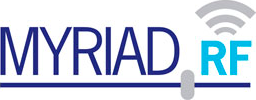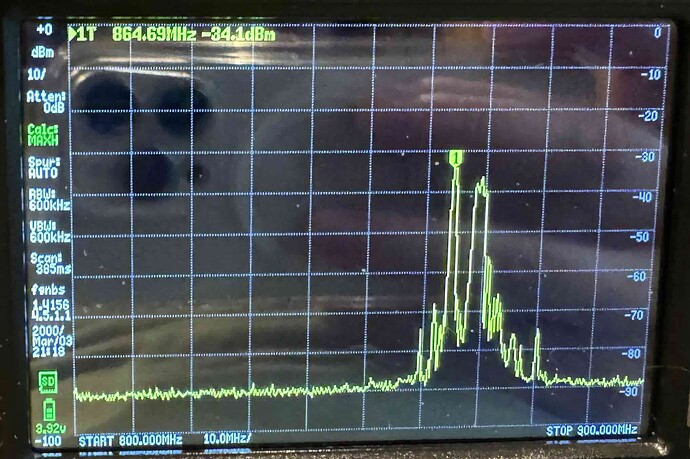I’m trying to use LimeSDR Mini v2.x and a Linux PC, with LimeSuite+Soapy+srsRAN_4G to test a Quectel EC200U UE. The main reason is that this UE is made for Asia and Africa, but I’m in the US. I don’t actually care that much about the RF aspects – I just want to get an international product talking to the Internet so I can work on some higher level software. I read this guide:
https://www.quantulum.co.uk/blog/private-lte-with-limesdr-and-srsran---part-1-software/
And it seemed like it would do the trick.
Obviously, since this is in the US, I am using a conducted/cabled configuration. It looks like this:
Linux + srsRAN_4G
|
USB
|
LimeSDR Mini 2.x
TX RX
| |
| |
| Attenuator #2 (have tried multiple sizes/combinations)
| |
XRDS-RF Wideband 2-Way Splitter 698-2700 MHz
|
Attenuator #1 (have tried multiple sizes/combinations)
|
Quectel EC200U
The issue I’m having is that my UE won’t seem to actually join the network (apologies for terminology – I’ve got a lot of Wi-Fi experience, but EXTREMELY little LTE knowledge).
Unless I remove almost all of the attenuation, nothing seems to happen at all. (Figuring out attenuation is challenging for the RF newbie.)
But if I do remove most of the attenuation, then I do see some log messages on the ENB:
RACH: tti=181, cc=0, pci=1, preamble=16, offset=32, temp_crnti=0x46
Disconnecting rnti=0x46.
RACH: tti=1471, cc=0, pci=1, preamble=14, offset=32, temp_crnti=0x47
Disconnecting rnti=0x47.
RACH: tti=1921, cc=0, pci=1, preamble=28, offset=32, temp_crnti=0x48
Disconnecting rnti=0x48.
On my EPC, I never see anything like the “Initial UE message” that is documented in the example.
I opened up a support case with Quectel who helps me get some logs on the UE side. Comparing with packet captures in srsENB, here’s what I see.
On the eNB side:
- eNB receives RACH from UE
- eNB sends DL-SCH/RAR
- eNB receives rrcConnectionRequest
- eNB sends rrcConnectionSetup
And then nothing until timeout and the process repeats.
On the UE side:
- UE sends RACH
- UE receives DL-SCH/RAR
- UE sends rrcConnectionRequest
- UE receives rrcConnectionSetup
- UE sends rrcConnectionComplete
And then it times out waiting for the next thing to happen – but as we can see from above, the eNB never gets the rrcConnectionComplete packet, so it’s never going to proceed.
The other thing that Quectel noticed was that their modem was indicating the signal quality was pretty low – the RSRP being reported as -117. I don’t actually know what these numbers mean, but the web seems to indicate this is pretty bad.
So for the last week or so, I’ve been playing with a tinySA ULTRA to see if I could measure transmit power (as mentioned in my previous email, I’ve struggled with the appropriate amount of attenuation – partly because I don’t understand this stuff, but also because I had no way to know where things were).
So I did two tests:
- I performed a “continuous transmit” test of the Quectel modem, and used the spectrum analyzer to look (using a “max hold” function), measuring at the RX port of the LimeSDR-Mini. This is what the signal looks like, and I sort of think that it looks like it’s supposed to? This is with a 30 dB attenuator (in Attenuator #1 slot from my previous diagram), and no other attenuation.
- I don’t know how to do a continuous transmit test of the srsRAN/Soapy/LimeSDR combination. So I just did the same “max hold” function while I started eNodeB and let it run for a minute or so, measuring at the RX port of the Quectel module. This signal doesn’t look as good to me – but, really, what do I know, and maybe it’s not fair because I’m not doing continuous transmit in this case. But right off the bat I notice that the power is lower (maxing out at -30 dBm to -40 dBm, compared to the -20 dBm of the Quectel), but also the “curve” doesn’t look like a nice solid band the way the Quectel modem does. Perhaps it’s not even power that’s my problem – maybe it’s just something wrong with the way the LimeSDR uses the spectrum? (Grasping here, sorry) Oh one more thing – #1 was performed on LTE Band #3, but #2 was performed on LTE Band #5. But the results are similar on either band – I just happened to be experimenting when I took the picture.
Any advice for trying to get this working is very much appreciated. Like I said, I really only care about it working at the higher level – it doesn’t have to perform well or anything. Just need it to be connected to the Internet here in the US.
Thank you!
Rob


